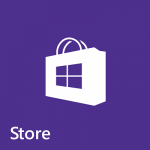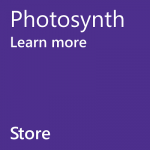The Windows platform team has released three new Windows platform developer updates available for you including Visual Studio 2013 Update 3, the Windows Phone 8.1 Update and Windows Phone 8.1 Update emulator package.
- Visual Studio 2013 Update 3 is now available, providing a number of productivity improvements for the Windows platform developer
- The Windows Phone 8.1 Update emulator package is also now available, providing you with the latest phone image to test your app
- And the Windows Phone 8.1 Update is also now available via the Windows Phone Preview Program for Developers, enabling you to run your apps on a physical phone running the latest update
In this post, I’d like to provide a quick lap around these three updates, and provide some context around what they add to your developer toolkit.
Visual Studio 2013 Update 3
While today’s Visual Studio Update contains a whole lot of productivity goodness for the Microsoft developer (see Soma’s blog post for more details), I’d like to call out three new capabilities available that improve the Windows app building experience:
- You can now use a Push Notification wizard to connect your Windows app (client or phone) to a .NET Azure Mobile Service.
- Sockets are now available for you to use in your Windows apps, adding another networking option for your WinRT-based apps
- DirectX graphical debugging tooling improvements help DX devs be more productive – including some bug fixes and the addition of a command line tool in the DX remote MSI package to allow for capturing a graphics trace on a remote system without having to install the entire Windows SDK or Visual Studio.
To get Update 3, head on over to the Visual Studio download page.
Windows Phone 8.1 Update
Today, we are also making Windows Phone 8.1 Update available to our developers, both via emulator packages and a physical phone update. Today’s update continues the Windows Phone tradition of making phone updates available ahead of general consumer availability, and providing you with the opportunity to test your apps and games with the update before your customers start doing so.
As shown off by JoeB last week, there’s a ton of end-user goodness in the update (check out Joe’s Update 1 post for more info). However, you’re a developer, and you’re likely wondering what’s in the update for you. Overall, the update contains no new developer APIs, but it does contain a number of OS improvements that are sure to improve the overall experience your customers will have with your app. Here are three Update 1 improvements that I believe are worth calling out:
- Consumer VPN support brings peace of mind to phone users wanting to access an app’s backend services in a safe and secure manner.
- There are a number of Bluetooth connectivity improvements in the update, improving the BT integration with cars and headsets, and we’ve added a new Bluetooth Personal Area Network (PAN) profile. Also of note on the BT-front, the team has added some additional APIs for device manufacturers to make it easier to build companion apps for their devices and to enable notifications to be more easily pushed from the phone to a wearable device.
- On the user start screen, the Store app now sports a live tile to help developers get discovered and installed more often, and the new Live Folders capability should help make it easier for you to be found and launched. 🙂
To grab the bits and start seeing how your app runs on the update:
- You can now download the Windows Phone 8.1 Update emulator package from the Windows Dev Center download page.
- To update your phone to the Windows Phone 8.1 Update, you’ll need to use the Windows Phone Preview for Developers program. Once your phone is opted in, you need to go into ‘Settings’ | ‘Phone update’ and check for an update; if you’re not seeing the update, verify that the ’Preview for Developers’ app is installed and that the ‘Enable Preview for Developers’ checkbox is selected.



